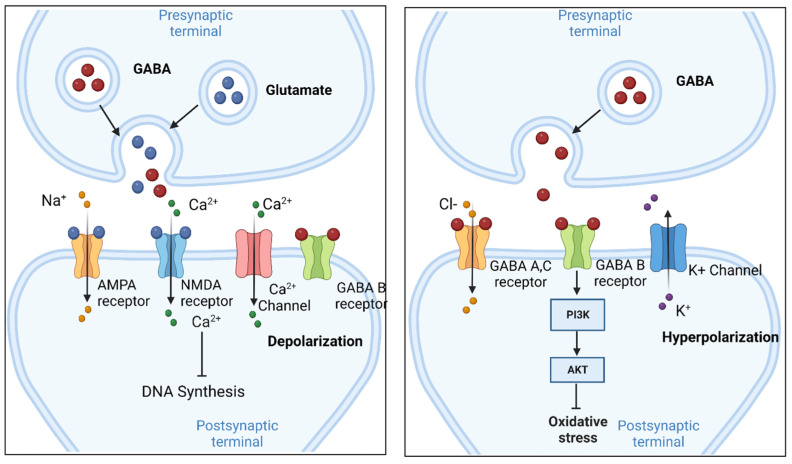Figure 1.
The role of GABA and glutamate as neurotransmitters. In the early stages of cortical neurogenesis, glutamate and GABA depolarize cells in the ventricular region of the mouse embryo neocortex (left panel). Glutamate binds its receptor, which is known as N-methyl-D-aspartate receptor (NMDA receptor or NMDAR), to depolarize the neuron. Glutamate selectively interacts with α-amino-3-hydroxy-5-methyl-4-isoxazole propionic acid (AMPA) and GABA can bind to gamma amino butyric acid (GABA)-B receptors. GABA and glutamate increase the concentration of Ca2+ in ventricular zone cells, and decrease DNA synthesis by activating voltage-gated Ca2+ channels. Although most metabolites regulate depolarization of the synapse, GABA-B involves hyperpolarization (right panel). GABA-B receptor activates potassium outflow channels through G-protein signaling to induce hyperpolarization. GABA-B receptor activates phosphoinositide 3-kinase (PI3K)/protein kinase B (AKT) signaling and anti-apoptotic factors to relieve oxidative stress.

